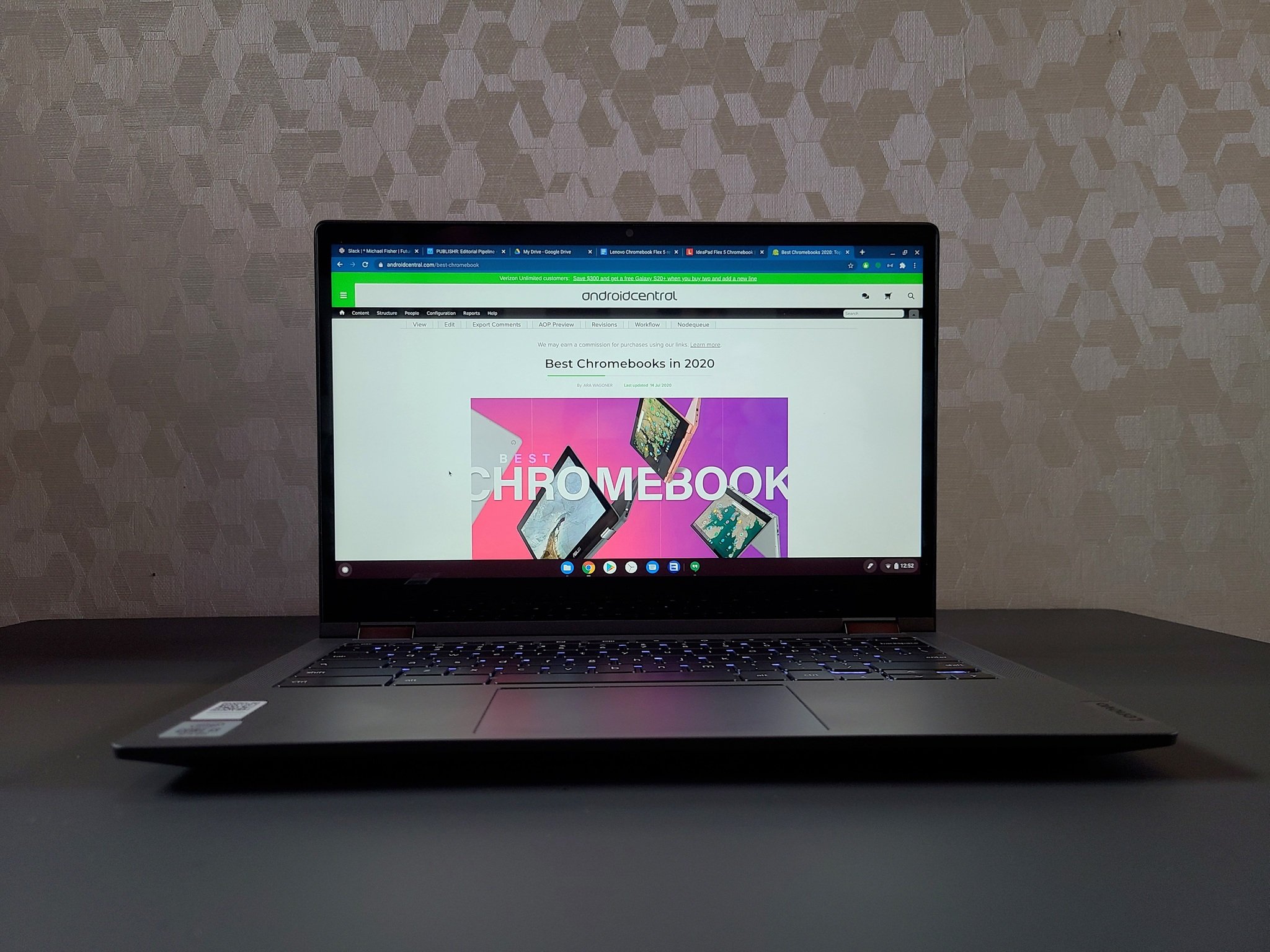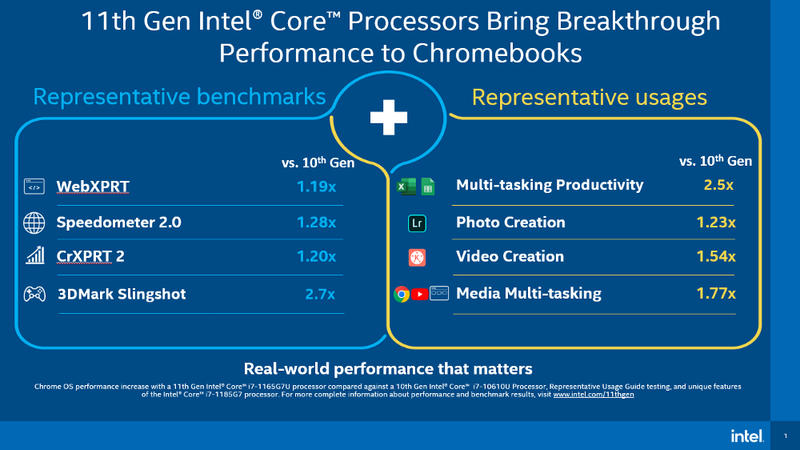What Intel's Tiger Lake CPUs mean for Chromebooks in 2020

Intel introduced its 11th Gen Tiger Lake platform earlier this month, and the one point that stood out was the performance figures. Intel is projecting a two-fold performance increase for real-world tasks like video and image editing, multi-tasking, video conferencing, and more.
The gains in performance are particularly interesting in the context of Chromebooks. The best Chromebooks you can buy today are powered by Intel CPUs, and Tiger Lake is set to usher in the next wave of Chromebooks that are more powerful and consume less energy at the same time.
Tiger Lake Chromebooks will offer 2.5x gains in day-to-day multitasking use-cases.
Intel is touting a 2.5x increase in real-world performance from 10th Gen designs for multitasking use cases, like opening Excel spreadsheets in Google Sheets of Word documents in Google Docs while running a Google Meet video conference in the background. That's a situation we can all relate to, and the gains on offer are because Intel shifted to a more efficient 10nm manufacturing node for Tiger Lake.
Shifting to a 10nm node allows Intel to add more transistors and increase the frequencies, leading to better real-world performance. We've seen a similar strategy play out in the smartphone segment over the last five years, with Qualcomm offering sizeable gains by switching from the 14nm Snapdragon 820 to the 10nm Snapdragon 835 and once again with the 7nm Snapdragon 855 platform.

Intel is aiming to deliver similar generational gains here, touting that Tiger Lake designs will let you open Chrome tabs 77% faster while running a 4K YouTube video in the background — without affecting the quality of the video. Gaming is another important factor with Tiger Lake, with Intel's Xe graphics platform delivering up to 2.7 times the performance of 10th Gen designs.
Intel is working with device makers to release thin-and-light Chromebooks powered by Tiger Lake.
Basically, what all of this means is that Chromebooks powered by Tiger Lake will offer much better performance when compared to models currently available in the market today. Chrome OS is a mature platform, and while Chromebooks are fantastic for productivity, they're not the most powerful machines around. With Tiger Lake, Intel is looking to deliver meaningful gains in this area and ensure that even budget models don't feel slow.
Another interesting aspect of Tiger Lake is Intel Evo, Intel's thin-and-light initiative. With Evo, Intel sets out a series of guidelines for device makers around lightweight designs, instant wake, fast charging, and at least nine hours of battery life. Evo is an extension of Project Athena, where Intel worked with Acer, Asus, Dell, HP, Lenovo and Samsung to deliver lightweight Chromebooks with great battery life and performance.
Be an expert in 5 minutes
Get the latest news from Android Central, your trusted companion in the world of Android
Some of the Athena models include the Acer Chromebook Flip C436, Lenovo Chromebook Flex 5, and the Samsung Galaxy Chromebook. Intel is continuing that collaboration with Tiger Lake, so you will see new designs in the coming months with updated hardware.
Intel's partnership with Google over Chromebooks goes back to the very beginning of Chrome OS, with the company noting that its CPUs power 90% of all Chrome OS devices sold to date. Chromebooks have taken on added significance in 2020 because of remote work and online learning, and Tiger Lake is ideally positioned to deliver much-needed performance gains starting next year.

Harish Jonnalagadda is Android Central's Senior Editor overseeing mobile coverage. In his current role, he leads the site's coverage of Chinese phone brands, networking products, and AV gear. He has been testing phones for over a decade, and has extensive experience in mobile hardware and the global semiconductor industry. Contact him on Twitter at @chunkynerd.
